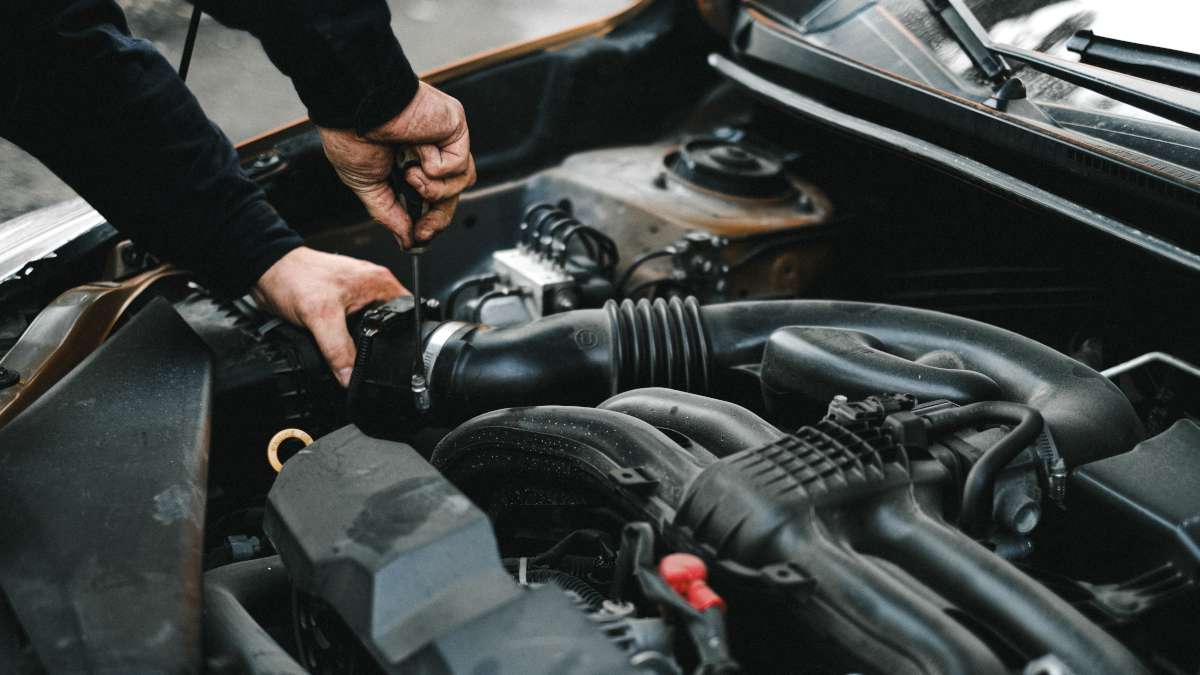
Fleet managers need to maintain their fleet vehicles in perfect condition to ensure safe and efficient operations. Yet, keeping up with fleet maintenance can be a real challenge. To that end, having a fleet preventive maintenance schedule in place can help managers identify issues, and take prompt action; thankfully, avoiding unpleasant situations.
But let’s examine what exactly constitutes a preventative vehicle care approach, why is it important for your fleet business; and, how to create and implement an effective preventative maintenance schedule, to keep breakdowns at bay.
What is fleet preventive maintenance?
Before we go on, let’s see what fleet preventive maintenance is. In brief, it’s the routine of inspecting your vehicles and their equipment for minor issues, before they become big trouble on the road.
In contrast to reactive maintenance — which is performed after the occurrence of a breakdown— preventive maintenance is proactive.
Why keep to a preventive maintenance schedule?
Maintenance costs are among the largest ones for fleet businesses; and managing them is essential to increase Return on Investment (ROI). By establishing and following a customized fleet upkeep program, you make sure that maintenance is always conducted at the right time.
As a result, vehicle availability and performance are increased; whereas, breakdowns, downtime, and overall operational costs are reduced. Moreover, a well-planned preventive maintenance schedule maximizes vehicle lifespan.
All things considered, it’s important to create an effective fleet preventive maintenance plan — and keep at it — because it will help:
- Ensure vehicle reliability
- Maximize fleet uptime
- Increase performance and productivity
- Lower operating costs
- Increase workplace safety
- Reduce driver turnover
- Increase vehicle shelf-life, hence, resale value
How to plan for an effective fleet preventive maintenance
Develop a maintenance checklist
First, you need to develop a preventative maintenance tasks checklist — for each fleet vehicle class and type separately. Meanwhile, don’t forget to take into consideration the manufacturer’s recommendations, to make sure you get the best results.
Below, we’ve put together some of the most commonly included items, just to help you start with your checklist:
- Engine oil and coolant
- Fluids (transmission, brake, etc.)
- Filters (air, fuel, etc.)
- Plugs and wires
- Belts and hoses
- Battery
- Fuel system
- Brake system
- Electrical system
- Steering and suspension system
And then, there are also some equally important, less obvious items to keep up to:
- Exhaust system
- Tires and rims
- Chassis
- Glass (windshield, side and rear window), and mirrors
- Windshield wipers and windshield fluid
- Seats and seat-belts
- Headlights and taillights
- Auxiliary systems
- General tune-ups
Define the ideal preventative maintenance intervals for your fleet
A rule of thumb is to check the manufacturer’s manual for the recommended service intervals. Keep in mind that most vehicle manufacturers base their recommendations on mileage. That said, you should also take into account that these intervals need to be based on the operating conditions — and type — of each vehicle.
To elaborate, fleet vehicles used by multiple drivers, and those used on unsurfaced terrains (off-roading) may require shorter fleet preventative maintenance intervals. Comparatively, fleet vehicles that you use rarely, or for specific purposes, may require service less frequently.
Appoint your drivers to conduct vehicle inspections frequently
Naturally, your fleet drivers are your company’s first line of defense against unexpected breakdowns. Therefore, it’s essential that you task them with performing frequent inspections on the vehicle(s) they’re using; and then, of course, immediately report any detected issues. These inspections can include basic vehicle parts (brakes, tires, etc.), and you can perform them either daily or on a predetermined timetable — always before the trips.
However, your drivers must be trained properly on inspection procedures; otherwise, a potential issue may go unnoticed, eventually leading to a major malfunction or breakdown. Regardless of the upkeep practices implemented in your fleet, inspections are key to preventing minor issues from becoming costly problems.
Make the most of fleet Telematics technology
You can set a fleet preventative maintenance schedule manually or by utilizing fleet Telematics technology; such as fleet maintenance management software. Needless to say, manual scheduling can be time-consuming; let alone, unsound, as you may find it difficult to stay up to date with maintenance tasks.
On the contrary, a fleet monitoring system can take all the hassle off your plate, by notifying you of imminent routine service activities; not to mention, running diagnostics, and sending real-time alerts on vehicle malfunctions. Consequently, it’is the most efficient option for getting accurate reports on fleet operations promptly, allowing you to make timely decisions.
To sum up
Fleet preventive maintenance is key for keeping operational costs down — and fleet productivity up. Given that the costs for routine upkeep tend to be significantly less than those for unexpected maintenance and downtime, effective maintenance scheduling can make a big difference to your bottom line.
Once you implement a preventive upkeep schedule, it won’t’ be long before your fleet business starts reaping the benefits of reliable, and cost-effective operations.